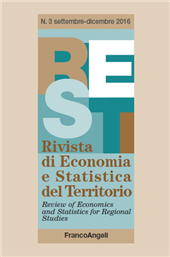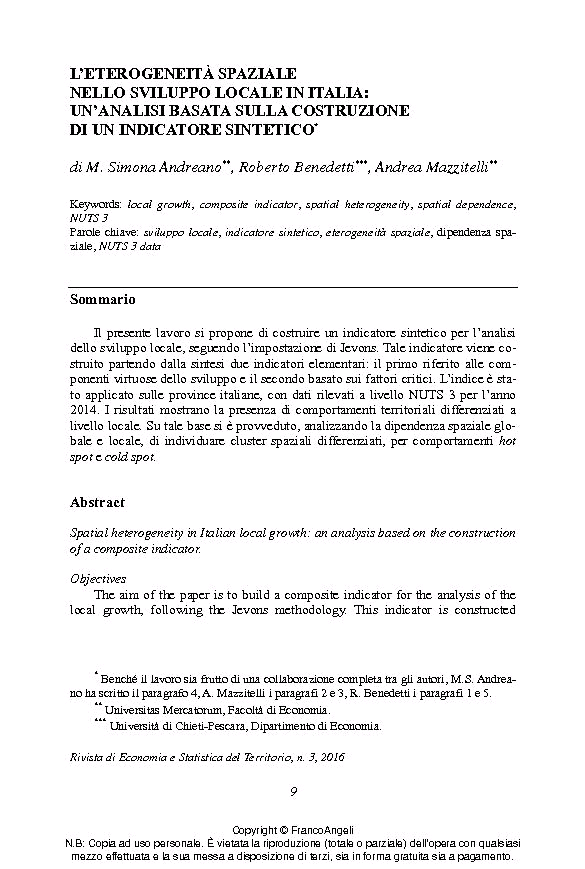L'eterogeneità spaziale nello sviluppo locale in Italia : un'analisi basata sulla costruzione di un indicatore sintetico
9-27 p.
Spatial heterogeneity in Italian local growth: an analysis based on the construction of a composite indicator. The aim of the paper is to build a composite indicator for the analysis of the local growth, following the Jevons methodology. This indicator is constructed starting from two elementary indicators: the first refers to the virtuous components of the development and the second is based on its critical factors. The proposed indicator is applied on Italian NUT3 data and its spatial heterogeneity is analyzed. Methods and Results. The proposed composite indicator, to analyze the multidimensional phenomenon of the local growth, is based on the Jevons methodology. This technique uses the geometric mean to summarize the individual component information. In this way, unbalanced values will be automatically penalized. The spatial distribution of the indicator shows the presence of heterogeneous behavior of the Italian local growth.
This heterogeneity is confirmed by the application of standard spatial analysis on the proposed indicator. Conclusions. Empirical results show that Italian Provinces are characterized by socio-economic growth very different locally. Therefore, this complexity should be appropriately considered in the definition of local growth policies. North provinces evidenced hot spots behaviors, instead the South cold spots, where provinces with low values of the indicators are clustered together. [Publisher's Text].
Forma parte de
Rivista di economia e statistica del territorio : 3, 2016-
Artículos del mismo número (disponibles individualmente)
-
Información
Código DOI: 10.3280/REST2016-003002
ISSN: 1972-5000
MATERIAS
KEYWORDS
- Sviluppo locale, indicatore sintetico, eterogeneità spaziale, dipendenza spaziale, NUTS 3 data
- Local growth, composite indicator, spatial heterogeneity, spatial dependence, NUTS 3.



